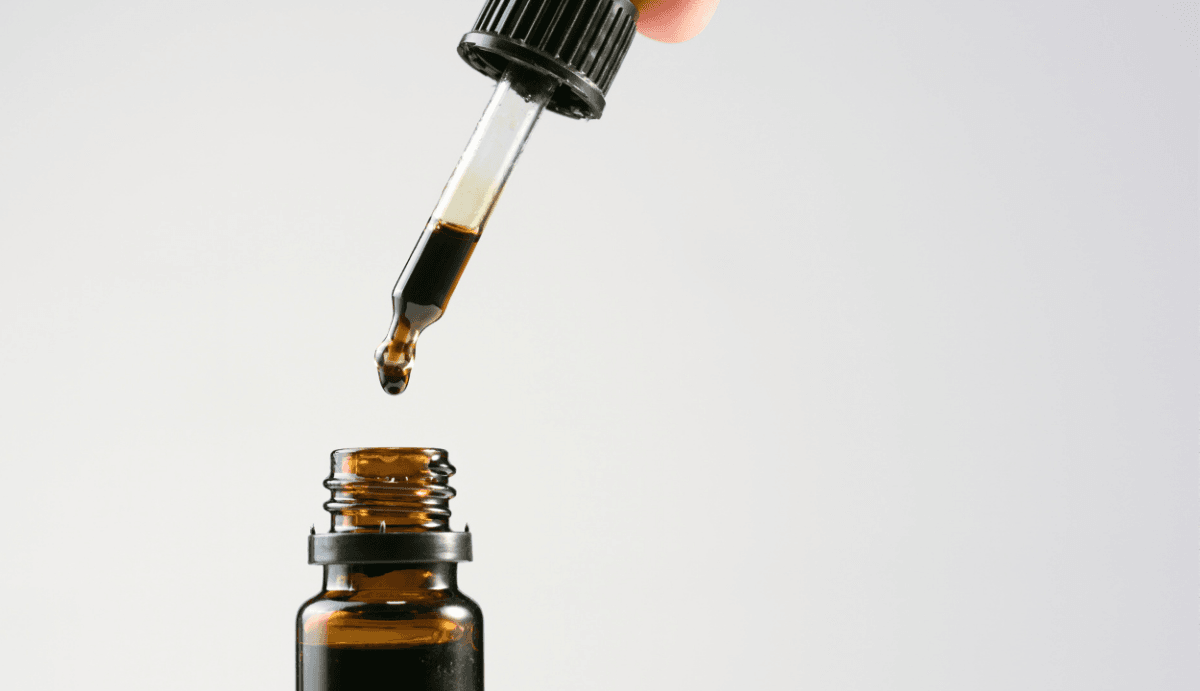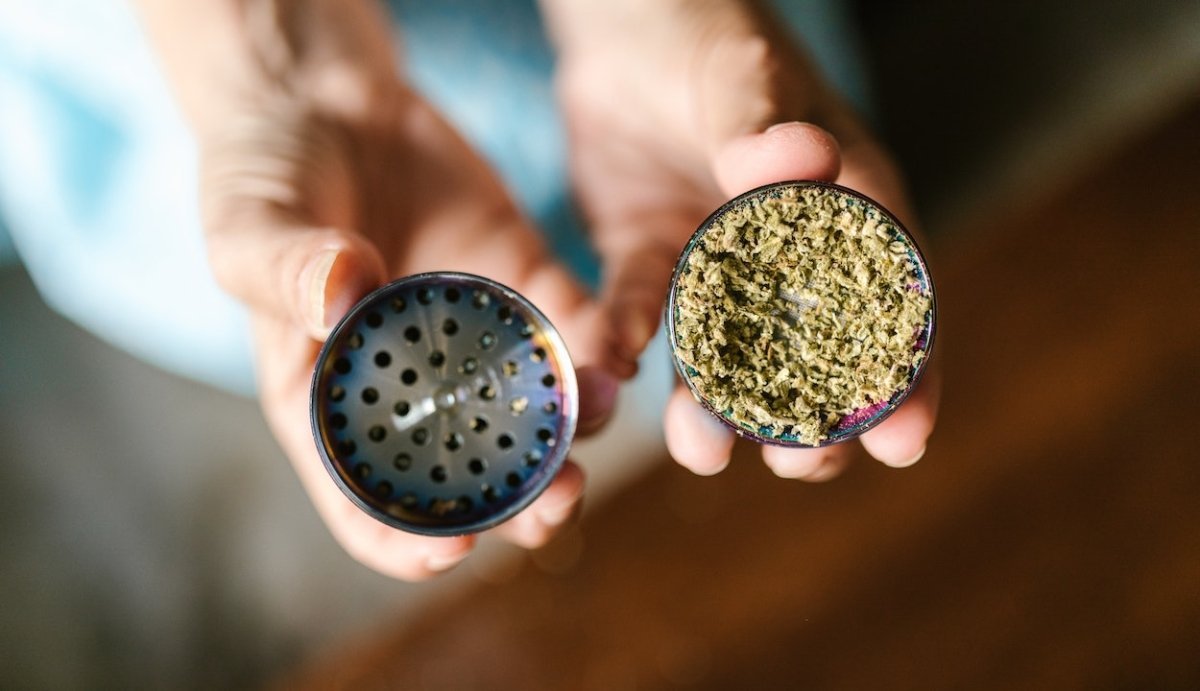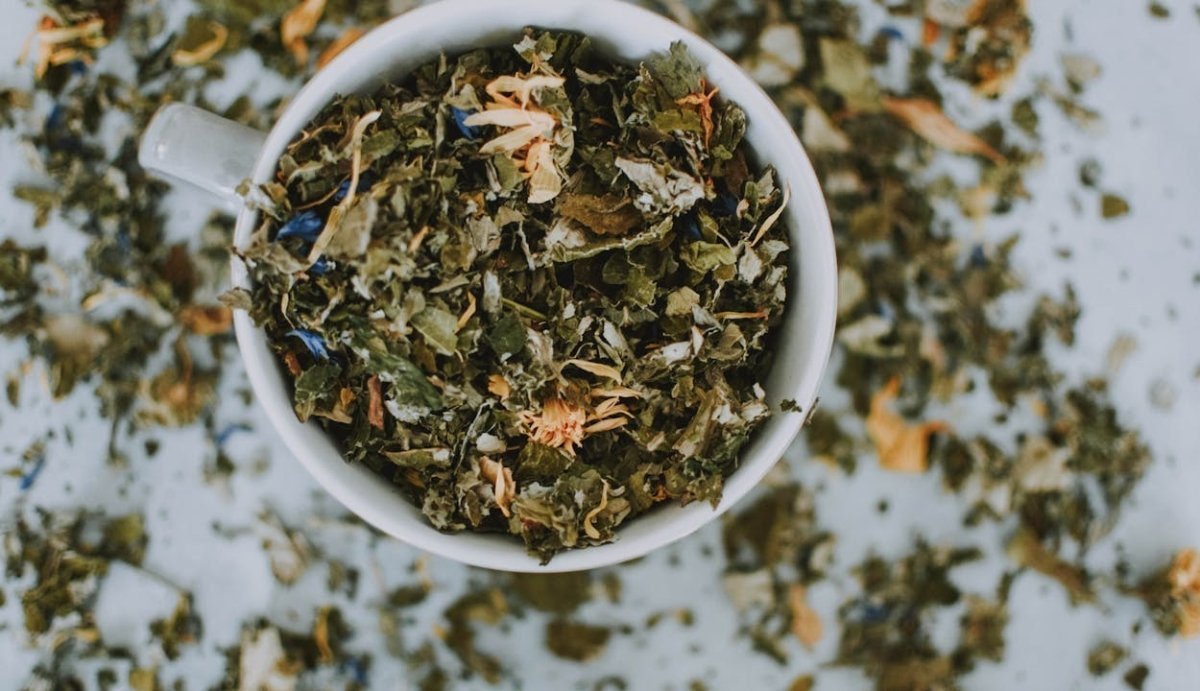Your Cart is Empty
FREE SHIPPING ON ALL ORDERS $75+
Hemp extraction refers to the careful processing of hemp plant material to extract its constituent components like cannabinoids, terpenes, or essential fats.
Hemp extraction is most frequently used for collecting cannabinoids (like CBD) and hemp oil. These can be used to make a range of CBD products and hemp oil-based edibles and topicals.
 When making CBD products, the extraction process is vitally important for the integrity, efficacy, potency, and safety of the final product. Therefore, health-conscious consumers are quick to ask "how do you extract CBD?" when vetting a brand for approval.
When making CBD products, the extraction process is vitally important for the integrity, efficacy, potency, and safety of the final product. Therefore, health-conscious consumers are quick to ask "how do you extract CBD?" when vetting a brand for approval.
The type of hemp materials and extraction methods used to make these products varies greatly. Different combinations of materials and extraction methods will each yield different end results.
Due to these varying factors, even formulas that look the same (ie. two different full spectrum CBD tinctures with MCT oil and no added ingredients) may vary greatly from brand to brand.
The hemp extraction process is a major part of what makes each brand unique, and each process has its own benefits and drawbacks.
Table of Contents
Hemp Material for Extraction
The Hemp Extraction Process
What CBD Extraction Method is Best?
Hemp Extraction Laws and Regulations
What Happens After Extraction?
Key Takeaways
Resources
Any part of the hemp plant can be used for extractions, but each part of the plant has different properties and may be more suitable for different applications.
For instance, the majority of a plant’s cannabinoid content is found in its flowers, or small buds that form along the stalks.
The leaves, stems, and stalks may have a moderate amount of cannabinoids as well, but they aren’t generally as potent as the flowers.
Manufacturers choose their hemp material based on several different factors, like availability or desired potency. Some brands may make use of the entire hemp plant by parting it out and using different parts for different types of products.
What hemp material is best for extraction?
There’s no wrong answer. It just depends on your desired outcome, availability, budget, and a number of other factors. Usually, the material used falls into one of these categories:
“Biomass” generally refers to the hemp plant in entirety. In other words, the entire plant is harvested whole and the material, including flowers, leaves, and stalks, is used for extraction. This is a great method for low or zero-waste manufacturing and can be considerably cost effective.
Hemp flower extraction refers to a process where only the buds of the hemp plants are used.
This method is frequently chosen because it can yield extract material with a high cannabinoid potency since cannabinoids are most concentrated in the flowers.
Trim is the material left behind after the flowers are harvested and trimmed. Hemp flower may be used separately or sold whole, but the remaining material still contains some amount of cannabinoids and terpenes.
In some cases "trim" refers only to the small leaf clippings left behind after buds are hand trimmed, but the small amount of leftover material may not be suitable for large scale extraction. For extraction purposes, trim usually refers to these trim clippings and/or whole plant material (similar to hemp biomass) minus the flowers.
 The seeds of the hemp plant are sometimes used for hemp extractions, but are most frequently chosen for extracting hemp oil (for dietary or topical purposes) and not CBD.
The seeds of the hemp plant are sometimes used for hemp extractions, but are most frequently chosen for extracting hemp oil (for dietary or topical purposes) and not CBD.
This is because the hemp seed is made up of over 30% oil, but only typically carries a CBD content less than 30 micrograms per gram. It takes 1000 micrograms to make a single 1 milligram dose, so sourcing CBD from seeds is very inefficient.
There’s no exact science to extracting hemp compounds. The process can be as simple as a single-round oil extraction, or it can involve a complex combination of extraction methods.
If creating full spectrum CBD products, which generally aim to leave the extract mostly unrefined, manufacturers often use as few extraction methods as possible. The less refined a product is, the more likely it is to carry hempy attributes, like a potent smell or flavor.
Alternatively, the hemp extraction can be a lengthy process that involves multiple rounds of refinement. With enough refinement, you can create a CBD product that is more than 99% pure called CBD isolate.
In any case, when designing a CBD extract formula, the process will involve a combination of the following techniques:
The decarboxylation process, commonly called “decarbing,” involves heating the hemp material to precise temperatures. Heat converts CBDa to CBD, which helps boost the CBD content.
The extraction methods used to make CBD products vary greatly, but they boil down to three popular, basic methods: solvent-based extraction, solventless extractions, and oil extractions.
Solventless extractions, like Supercritical CO2 extractions, are frequently described as “cleaner,” because no solvent can be left behind. CO2 extraction is also highly effective, and if done correctly can result in highly potent extract material that preserves a high quantity of beneficial cannabinoids and terpenes.
Although the claim is largely unfounded, some manufacturers argue that CO2 extraction renders hemp extract material “less effective” because it rips the cannabinoids apart, degrading their “natural structure.”
Solvent-based extractions, like ethanol extractions, are also frequently used and can also help guarantee potent end material. If done correctly, residual ethanol can be carefully removed resulting in a “clean” final product, too.
The main downside to solvent-based extractions is the possibility of these residual solvents, which can be dangerous for consumers. This highlights the need for thorough lab testing.
Oil extractions are the oldest cannabis extraction method in the books. This process involves using an oil base, like olive oil, and gently heating it to remove the cannabinoid material. This is similar to the way you make cannabis butter at home. Oil extraction is frequently preferred by manufacturers who strive to keep their product as “natural” as possible.
Oil extractions are known for being inconsistent and less effective than CO2 or solvent-based methods, and heating the oil too much can result in degraded CBD material.
The winterization process involves putting the hemp extract material in ethanol and then keeping it at sub-zero temperatures.
This forces separation between the cannabinoid compounds and other plant materials, like waxes, terpenes and lipids, which will collect at the top of the solution so they can be easily removed.
This process is not always used to create full spectrum products, but is a key step in creating products without strong plant flavors.
 Distillation is sometimes used to create “CBD distillate,” a form of full spectrum CBD that contains highly concentrated amounts of CBD, but generally has a less diverse cannabinoid and terpene profile.
Distillation is sometimes used to create “CBD distillate,” a form of full spectrum CBD that contains highly concentrated amounts of CBD, but generally has a less diverse cannabinoid and terpene profile.
This complicated process separates different cannabinoids on a molecular level by using vacuum chambers to fine tune the boiling point of cannabinoids, and then exposes them to extremely high and low temperatures to force cannabinoids apart.
Depending on the methods used, cannabinoids can be distilled separately or in groups.
For full spectrum products, distillation is usually only chosen to deplete some of the THC content so that the material remains within legal limits, or to boost the CBD content of the extract material.
Repeated distillation will result in isolated cannabinoids, which is the opposite of full spectrum.
Flash chromatography refers to a fast process where cannabinoids are separated by polarity.
The process involves a “mobile phase” (usually the cannabinoid solution), which is forced through a column of varying materials, called the “stationary phase,” for varying amounts of time.
As the material passes through, the cannabinoids are separated in order of increasing polarity. They can then be collected and measured individually.
This method is advanced and requires special equipment, but is frequently chosen because it is fast and generally effective.
The crystallization process is generally the last step in creating CBD isolates.
This multi-phase process is designed to rearrange CBD molecules into a more rigid, crystalline form.
Crystallization also plays a key role in purifying the material further, reducing its volume, and creating a highly concentrated and stable form of CBD.
The crystallization process usually results in large, dense CBD isolate crystals, which are frequently ground down into a fine powder to make them easier to use.
If you're considering dabbling in hemp extraction or launching a full scale CBD manufacturing operation, you're probably looking for confirmation that one CBD extraction method is better than the rest.
Unfortunately, it isn't that simple.
Each extraction method, or combination of different methods, produces an end product with entire unique properties. The quality of the starting cannabis material will weigh in heavily on the integrity of the final product, too.
The "best" extraction method depends on your end goal. For CBD isolates, many manufacturers argue that Supercritical CO2 extraction results in the highest potency yield, which can then be refined further using winterization, distillation, and crystallization methods. For consumers, this complex combination of extraction techniques can offer a highly potent CBD dose without the risk of THC contamination.
Alternatively, opposing brands argue that full spectrum CBD is more effective because it preserves the plant’s natural composition. This type of CBD product requires a different extraction process, and the "best" method is still more a matter of opinion than fact.
Proponents of CO2 extraction argue that it's safer and more effective, resulting in concentrated levels of CBD and other cannabinoids without the risk of leftover chemical solvents.
Others argue that the isolation techniques involved in CO2 extractions void the efficacy of full spectrum extract by forcing separation between the cannabinoids and stripping some of the plant's beneficial compounds away.
Manufacturers that forgo CO2 extraction for this reason choose a method they consider to be more natural, like ethanol or oil based extractions.
These methods are known for extracting cannabinoids in their original forms and concentrations (relative to each other), resulting in a hemp extract material that closely resembles the original hemp material.
Still, oil extractions are known for being inconsistent and resulting in less potent material.
Ethanol and other solvents may pose potential safety risks and careful measures must be taken to ensure that all residual solvents are removed from the hemp extract.
Ultimately, more information is needed in order to decide which methods provide the best results. As CBD-based medication expands, FDA guidelines are established, and more research is done regarding CBD formulations and the efficacy of each extraction technique, we will likely see a shift in the manufacturing processes used.
For now, the best combination of methods will depend on the product composition you hope to achieve. Some products require high potency and purity of CBD, while others seek a more natural, oil-based solution of hemp’s full cannabinoid and terpene profile.
When considering the process for either small or large scale extraction, the most important factor is ensuring the materials, extractions techniques, and the final extract materials are in accordance with legal regulations.
At the baseline, the laws surrounding CBD products and manufacturing procedures are loose and seemingly undecided.
The Hemp Farming Act of 2018 (incorporated as part of the Agricultural Improvement Act of 2018) effectively legalized the cultivation of hemp, defined as
“the plant Cannabis sativa L. and any part of that plant, including the seeds thereof and all derivatives, extracts, cannabinoids, isomers, acids, salts, and salts of isomers, whether growing or not, with a delta-9 tetrahydrocannabinol concentration of not more than 0.3 percent on a dry weight basis.”
Still, the FDA still maintains all authority to regulate products containing cannabis or cannabis derived compounds, and they have yet to weigh in with definitive guidelines. So far, most remarks from the FDA have centered around the way brands can market CBD products, the accessibility of CBD-focused education, and consumer safety.
Under the Agricultural Improvement Act of 2018, CBD products made from industrial hemp that contain less than 0.3% THC are federally considered legal. The lack of FDA insight on how to prepare and market CBD as a food, drink, dietary supplement or cosmetic leaves CBD in a legal gray area.
In general, there are no regulations that define the requirements for the hemp extraction process. Therefore, any extraction process that uses materials recognized as safe and legal can be used.
Additionally, the main legal concerns related to CBD extraction is ensuring that the THC content of starting and final hemp material remains under 0.3%.
(Note: Laws regarding hemp, CBD, and extraction techniques may vary by state and city. Be sure to check your local legislation for more accurate information regarding these laws.)
Hemp extraction can be as simple or complicated as you like, but it still only amounts to a portion of the process of making the many different types of CBD products.
 After extraction, the products still need to be formulated and lab-tested. Each formula varies greatly from product to product and brand to brand, so this step is usually entirely unique.
After extraction, the products still need to be formulated and lab-tested. Each formula varies greatly from product to product and brand to brand, so this step is usually entirely unique.
Lab testing is a crucial step that helps ensure that products remain within legal guidelines.
Tests can be performed during any part of the manufacturing process. Some manufacturers choose to test their original hemp material as well as samples taken during each step of the manufacturing process, like after each extraction technique.
This frequent testing is a great way to maintain oversight of the hemp extracts’ cannabinoid potency, and may also help you optimize your extraction process to meet your needs.
Generally, these tests are done in-house to save on costs, but many brands choose to outsource to a third-party lab for a final batch test for each formula. These independent test results serve to offer unbiased reports to health conscious consumers that prove the potency and purity of products.
These testing procedures are not required, but are quickly becoming an industry standard.
Most leading brands offer access to some type of test results, and the most through brands offer test results that display the product’s cannabinoid and terpene profile, as well as test for potential contaminants like mold, residual solvents, pesticides, microbes, heavy metals, and more.
As more brands begin to offer access to these tests, consumers are becoming less willing to compromise on product and brand transparency.
Hemp extraction involves processing hemp to remove it’s beneficial compounds, like cannabinoids, terpenes, or fats.
Hemp extraction is not a narrow process. There are multiple different extraction techniques that can be used on their own or in a variety of combinations. Each method (or combination thereof) will produce a unique end result.
Additionally, the type of hemp material used for extraction will alter the end results. The entire hemp plant can be used, or the plant can be parted out and extracted individually, depending on the desired results.
Laws regarding hemp extraction are slim. Generally, hemp manufacturers just need to use extraction materials that are considered legal and safe. The main legal guideline to note is that hemp material must maintain a THC content of less than 0.3% to maintain its federally legal status.
After extraction, manufacturers use a series of test results to ensure that these THC limits are sustained. These tests can also help rule out contaminants, like residual solvents. Testing during the extraction process can also help provide oversight to help optimize the extraction process to meet your needs.
Comments will be approved before showing up.



